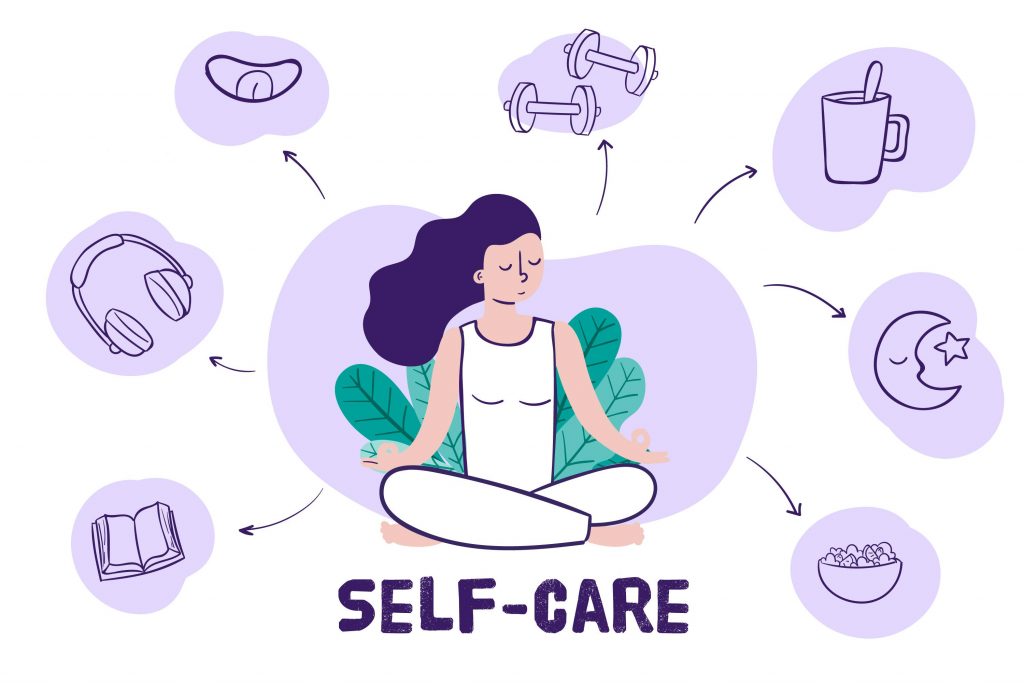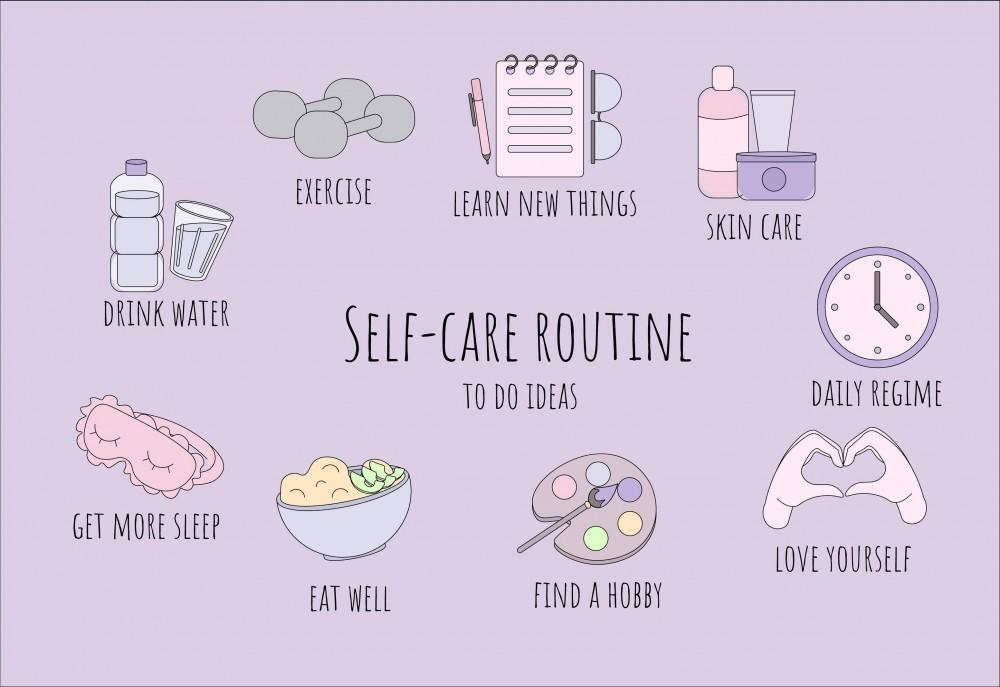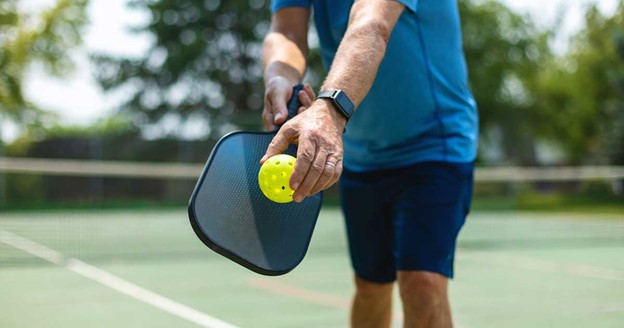(Southern Italian Poached Fish)
Serves 4 TIME 35 minutes Cooks Country
WHY THIS RECIPE WORKS
“Acqua pazza,” or “crazy water,” refers to the southern Italian tradition of cooking the day’s catch in seawater “Pesce All’Acqua Pazza”. Modern recipes feature longer ingredient lists: Parsley, tomato, white wine, and garlic are common. For the fish, we chose skin-on haddock fillets. The flesh held up nicely during simmering, and the abundant collagen in the skin suffused the broth with rich flavor and body. Halved cherry tomatoes provided sweetness and pops of color. We also liked the addition of white wine, which contributed brightness and light acidity. After just a few minutes, the haddock absorbed the heady flavor of the broth and the broth was enriched by the fish.
Pesce All’Acqua Pazza INGREDIENTS
1½ pounds haddock fillets, ¾ to 1 inch thick (I used boneless, skinless Cod or Shrimp)
1 teaspoon kosher salt divided
¼ teaspoon pepper
2 tablespoons extra virgin olive oil
3 garlic cloves, sliced thin
¼ teaspoon red pepper flakes
1 small onion, chopped fine
1 bay leaf
8 ounces cherry or grape tomatoes (or Sugar Bombs), halved
1¼ cups water
¼ cup dry white wine (Dry Vermouth)
12 fresh parsley stems, plus 3 tablespoons chopped fresh parsley, divided
2 tablespoons capers optional
BEFORE YOU BEGIN
You can substitute skin-on fillets of other firm, white-fleshed fish such as branzino and red snapper for the haddock. Serve with crusty bread.
Pesce All’Acqua Pazza INSTRUCTIONS
Sprinkle haddock all over with ½ teaspoon salt and pepper and set aside.
Heat oil, garlic, and pepper flakes in 12-inch skillet over medium heat, stirring constantly, until garlic begins to sizzle gently, 1½ to 2 minutes. Add onion, bay leaf, and remaining ½ teaspoon salt and cook, stirring constantly, until onion just starts to soften, 2 to 3 minutes. Add tomatoes and cook, stirring constantly, until tomatoes begin to soften, 2 to 3 minutes. Stir in water, wine, parsley stems, and half of chopped parsley and bring to boil. Nestle haddock skin side down in liquid, moving aside solids as much as possible (it’s fine if fillets fold over slightly at ends; liquid will not quite cover fillets). Spoon some liquid and solids over haddock. Reduce heat to low; cover; and simmer gently until fish registers 110 degrees at thickest point, 4 to 7 minutes. Let stand off heat, covered, until fish is opaque and just cooked through (fish should register at least 135 degrees), 3 to 7 minutes.
Divide haddock among 4 shallow soup bowls. Discard bay leaf and parsley stems; stir remaining chopped parsley into broth. Season broth with salt and pepper to taste. Spoon portion of broth and solids over each serving of haddock and serve immediately.
Nutritional Information
Per Serving (Serves 4)
Calories 221 Total lipid (fat) 8 g Fatty acids, total saturated 1 g
Fatty acids, total trans 0 g Fatty acids, total monounsaturated 5 g
Fatty acids, total polyunsaturated 1 g Cholesterol 92 mg Sodium, Na 814 mg
Carbohydrate, by difference 5 g Fiber, total dietary 1 g
Sugars, total including NLEA 2 g Protein 29 g
Let’s clear up one common misconception from the get-go: Self-care is not synonymous with self-indulgence or being selfish. Self-care means taking care of yourself so that you can be healthy, you can be well, you can do your job, you can help and care for others, and you can do all the things you need to and want to accomplish in a day.
If you think you’ve been hearing more about self-care lately, you’re right. One indicator: According to Google Trends, the number of searches for “self-care” has nearly quadrupled since 2018.
Paula Gill Lopez, PhD, an associate professor in the department of psychological and educational consultation at Fairfield University in Fairfield, Connecticut, says the need is obvious. “We have an epidemic of anxiety and depression,” she says. “Everybody feels it.”
Self-care is part of the answer to how we can all better cope with daily stressors, explains Kelsey Patel, a Los Angeles-based wellness expert. It’s work stress. It’s the stress of trying to keep up with the pace of daily life, which technology has hastened more than ever (just think how many emails come flooding into your inbox each day). “People are feeling lonelier and less able to unwind and slow down, which makes them feel more anxious and overwhelmed by even the simplest tasks,” Patel says.
What Is Self-Care, and Why Is It Critical for Your Well-Being?
Several organizations and researchers take a health-oriented approach when defining self-care. The World Health Organization defines self-care as: “the ability of individuals, families, and communities to promote health, prevent disease, maintain health, and cope with illness and disability with or without the support of a health worker.”
According to this definition, it includes everything related to staying physically healthy — including hygiene, nutrition, and seeking medical care when needed. It’s all the steps an individual can take to manage stressors in his or her life and take care of his or her own health and well-being.
What Is Self-Care?
Self-care is anything you do to take care of yourself so you can stay physically, mentally, and emotionally well. Its benefits are better physical, mental, and emotional health and well-being. Research suggests self-care promotes positive health outcomes, such as fostering resilience, living longer, and becoming better equipped to manage stress.
Some researchers have adopted a similarly clinical approach. A 2010 study defined self-care as “the set of activities in which one engages throughout life on a daily basis,” focusing on promoting health, preventing illness, and managing issues that come up.

A study published in 2018 took self-care to mean “the self-initiated behavior that people choose to incorporate to promote good health and general well-being.” The study authors added that it’s about being healthy but also about incorporating coping strategies to deal with work stressors.
In 2019, researchers published a framework to specifically point out that in addition to self-care being the activities individuals do on their own to promote physical and emotional health, it also includes the ways that individuals interact with clinicians and healthcare systems to tend to physical and emotional health. That means it includes things like getting a vaccine, scheduling cancer screenings, or taking prescription medications on schedule — but healthcare providers and organizations play a role, too, in how well individuals engage in these practices. In other words: There are a lot of people and factors that bear on any individual’s ability to engage in self-care.

As self-care has become more mainstream, the definitions have started to become more about general wellbeing and tend to focus on tuning in to one’s needs and meeting those needs. “Self-care is anything that you do for yourself that feels nourishing,” says Marni Amsellem, PhD, a licensed psychologist based in the greater New York metropolitan area.
“That can be something that’s relaxing or calming, or it can be something that is intellectual or spiritual or physical or practical or something you need to get done,” she says.
The International Self-Care Foundation also includes health literacy as a pillar of self-care, meaning that any steps you take toward better understanding health information you need to make appropriate decisions about your health and well-being counts as self-care, too.
Self-care requires checking in with yourself and asking yourself how you’re doing physically, mentally, and emotionally. Some people use it to deal with difficult news stories, while others practice it just to maintain their happiness day to day. Self-care does not mean the same thing for everyone. Different people will adopt different self-care practices, and even your own definition might change over time. “What is self-care for one person will likely differ from someone else, and what’s self-care for you one day might not feel like self-care another day,” Dr. Amsellem says.
Engaging in self-care regularly could help you put your best foot forward. “When we are regularly taking care of ourselves, we are better able to react to the things that go on in our lives,” Amsellem says. “It’s something we do to maintain positive well-being.”
Types of Self-Care
“It could be anything that floats your boat — anything that puts a smile on your face,” Dr. Gill Lopez says. “Anything that makes you feel cared for, even if it’s you caring for yourself.”
There are a few different categories of self-care:
- Emotional self-care, such as self-talk, weekly bubble baths, saying “no” to things that cause unnecessary stress, giving yourself permission to take a pause, or setting up a weekly coffee date with a friend
- Physical self-care, such as prioritizing sleep, adopting an exercise routine you can stick with, or choosing healthy and nourishing foods over highly processed ones
- Spiritual self-care, such as attending a religious service, spending time in nature, meditating, incorporating regular acts of kindness into your day, or keeping a gratitude journal
Additionally, Gill Lopez puts self-care into two further categories: temporary and enduring.
What Counts as Self-Care, and What Doesn’t
There’s no way to say exactly what counts as self-care because everyone’s definition is their own and unique.
The underlying rule is that it’s something that brings you sustained joy in the long run. And though there are plenty of examples of self-care that seem to tread a fine line between a health-enhancing behavior and self-indulgence, self-care doesn’t have to be about padding your calendar with luxurious experiences or activities that cost money (though it certainly can).
Consider a manicure or a massage or any other pampering activity. It might seem indulgent, but if the activity helps you de-stress and carve out time for yourself, it counts as self-care, Amsellem says. If weekly manicures or monthly spa days are beyond your means, they will likely add stress to your life in the long run, so there are plenty of other self-care practices you can adopt.
“Self-care does not have to cost anything — it’s just doing things you enjoy. And a lot of the things we enjoy or feel fulfilled from cost nothing,” Amsellem says. “Stepping outside and taking a deep breath, for example, might be the greatest act of self-care.”
Even if you can’t spend lots of time and money, Gill Lopez says you can still practice self-care several times a week by turning things you do every day into self-care practices.
Maybe you try being more mindful of your thoughts on your commute, or maybe you find ways to make daily tasks, like showering, more enjoyable. Pick a soap with a scent that you love, and focus on the physical sensations of the shower. Gill Lopez says: What does your shower smell like? What does it sound like? How does the warm water feel on your skin? “For about 10 minutes in the shower, which I have to do anyway, instead of letting my monkey brain run wild, I’m right there,” she says.
Daily chores like making your bed in the morning are also examples of self-care — or can be. “This is where that individuality comes into play, because for some people there is no way making a bed feels like self-care — it may just feel like a chore,” Amsellem says. But if it helps you claim your day and gives you a sense of accomplishment early on, you’ll have that with you even if the rest of the day gets derailed, Amsellem says.
The simple act of making your bed in the morning likely isn’t sufficient to account for all your self-care, she says. You may need to routinely devote time and energy to other self-care practices, she adds. “But if there are some days when you feel out of control, on those days, starting the day off doing what you wanted to do for yourself might be one of the biggest forms of self-care you engage in that day.”
And sometimes when all of our other self-care plans get thrown out of whack (you worked through your yoga class, your friend canceled your coffee date — we’ve all been there), it’s those small practices of self-care that provide just enough calm to help us get through the day and wake up in a better mood tomorrow.
The Effects: How Self-Care Benefits Your Health and Well-Being
Many common self-care practices have been linked to longevity and other positive health outcomes, says Ellen K. Baker, PhD, a psychologist based in Washington, DC. There’s a lot of research, for example, showing that things like exercise, yoga, and mindfulness are supportive of mental and physical health, she says.
An article published in 2020 noted that longevity in the 21st century depends on abiding by healthy practices — such as exercising, not smoking, and following a healthy diet — and also embracing a positive lifestyle all around. Paying attention to your well-being involves asking yourself big questions (such as “What brings me satisfaction?”) and then finding ways to get there.
The following self-care practices have been well-researched and linked to a longer life:
- Exercise People who exercised between two and eight hours per week throughout their lives reduced their risk of an early death by 29 to 36 percent.
- Finding Purpose According to the researchers behind a 2019 study, having a strong life purpose was associated with decreased mortality rates.
- Diet Eating a diet filled with more servings of fruits and vegetables per day was associated with a lower risk of mortality, especially from heart-related issues.
- Sleep A study published in 2017 found too little sleep (less than seven hours per night) was linked with higher mortality rates, though too much sleep wasn’t healthy either.
- Getting Outside According to a 2019 study, spending time in green space is associated with a lower mortality rate.
The clinical evidence documenting the long-term health benefits of specifically taking a self-care approach to health (over other approaches) is less robust, but it is building.
For instance, research shows that people with chronic conditions who were more likely to follow medication regimens, to be knowledgeable about how to take care of their health, and to have the skills to take care of their health (characteristics that are considered part of self-care) were more likely to score higher when it came to measures of mental and physical functioning.
How to Start a Self-Care Routine
To get started with a self-care routine:
- Determine which activities bring you joy, replenish your energy, and restore your balance.
- Start small by choosing one behavior you’d like to incorporate into your routine in the next week.
- Build up to practicing that behavior every day for one week.
- Reflect on how you feel.
- Add more practices when ready.
- Get support through sharing practices from loved ones, a coach, a licensed professional (like a therapist or dietitian), or through your healthcare plan, community, or workplace.
Practicing self-care doesn’t need to be a heavy lift right out of the gate. Here are a few ideas to ease you into your self-care journey:
- Journal.
- Start each day by paying attention to your breath for five minutes and setting intentions for the day.
- Eat breakfast.
- Reflect on what you’re grateful for each night.
- Put your phone on airplane mode for a half hour before bed each night to release yourself from the flurry of notifications.
- Call a friend just to say hello.
- Take up a relaxing hobby.
- Pick a bedtime, and stick to it.
Note: If you read this and feel a sense of demoralization or sadness from the challenges of mounting or establishing a self-care practice, it’s best to get help and support. There may be barriers to caring for yourself from past trauma, mental health issues, or family situations that may be making it more challenging to get started. Seek support from trusted counselors and behavioral health providers (like a therapist), a trusted primary care doctor, or a close friend.
The bottom line: Self-care can have a positive effect on your health and outlook, but it requires a commitment or intention to invest in your well-being.
Its name makes it sound like a silly playground game, but pickleball has become a seriously popular sport, especially with older adults. Pickleball stretches and exercises are important for your health.
The game, which is played with a paddle on a 20-by-44-foot court, has been described as a combination of tennis, ping pong and badminton. There’s a common misconception that pickleball is not as strenuous as tennis, but it can be, especially if you’re very competitive. Before you play, you still need to take precautions and warm up like you would with any other sport.
For anyone who is new to pickleball and hasn’t been very active, it is advised to slowly ramp up the amount of time spent playing. Cross-training to help to build up cardiovascular endurance, is recommended. Swimming and stationary cycling are both great for older people, because they are easy on the joints.
Even if you take the right pre-game steps, pickleball-related injuries can still happen. Here, we highlight the most frequent pickleball injuries that are seen among physical therapy patients, some exercises and stretches that can help prevent them and how to treat them when they happen.

Ankle sprain
Ankle sprains are the most common pickleball injury. Pickleball is similar to tennis in that it requires a lot of running and sudden stopping and a lot of side-to-side movements. If your ankle stabilizer muscles are not strong enough, you increase the risk of twisting your ankle.
If you do twist your ankle, you should ice it as soon as you can. You may also want to wrap it with an elastic bandage or use an ankle support sleeve, which can be purchased at a drugstore. Bandaging it provides compression, which helps keep the swelling down. Elevating the injured ankle can also help, as can taking an over-the-counter pain medication like Tylenol or Advil.
Move to try: Heel Raises
Controlled heel raises help to strengthen your ankles.
- Hold on to a counter or table for balance.
- Stand with your feet about hip-width apart and your toes pointing forward.
- Slowly raise your heels as high as they can go, then lower them just as slowly. Do this several times.
Knee strain
Because pickleball is popular among older people, a lot of players have underlying arthritis in their knees. The twisting and pivoting movements that happen on the court can often aggravate knee arthritis. You may have a sharp, stabbing pain or a momentary feeling of weakness.
Similar to an ankle sprain, if you strain or twist your knee it’s important to bring the inflammation down. Ice and over-the-counter pain medications can help control swelling, and an elastic bandage or knee brace can provide support.
Move to try: Side-Lying Leg Lift
The side-lying leg lift is particularly helpful for preventing knee injuries because it works the entire leg, all the way up to the hip. Building overall leg strength helps protect the knees.
- Lie on your side, then lift your top leg keeping the knee straight and position it slightly behind you. Keep your hips stacked on top of each other and engage your core.
- Slowly lower your leg before lifting it again. If you feel it in your butt — your glutes — you know you’re doing it right.
- Repeat several times, then switch sides.
Pulled hamstring
It’s very important to stretch and warm up your muscles before playing pickleball. The hamstrings, or muscles in the backs of your thighs, may get stretched too far or become strained, especially if you’re not warmed up. These injuries often happen during sudden stops on the court, when the muscles contract quickly.
As with other injuries of the lower extremities, icing the injury and taking over-the-counter pain medications are key to feeling better. With any of these injuries, if the pain persists longer than a week or if you can’t put any weight on the injured leg, you may want to see a healthcare provider.
Move to try: Hamstring Stretch
This warm-up stretches your calves as well as your hamstrings.
- Standing with both feet side by side, extend your left leg in front of you so that your heel is on the ground with your toes pointing up.
- Bend your right knee and hinge at the waist so that your torso angles forward. You should feel a stretch in the back of your thigh.
- Hold for 30 seconds, then switch sides and repeat. Additionally, a slow jog in place can help increase blood flow to the leg muscles before starting a game.
Tendonitis in the wrist, elbow or shoulder
Tendonitis, an inflammation or swelling of the tendons, is an injury caused by overuse. When you hit the ball in pickleball, you don’t use as much force as you do with tennis because the ball is much lighter, but if you’re new to the game or if you’re playing a lot, the repetitive motion can put stress on your tendons.
Especially if you’re just starting out with pickleball and have not regularly played other racquet sports, it’s important to give yourself a day or two of recovery between sessions. Once your muscles get used to the movements, you might be able to play more often.
Similar to injuries in the lower extremities, ice and pain medications can help to reduce inflammation and speed healing. For injuries caused by repetitive motion, rest is especially important in helping your body heal.
Injuries related to falls
When you fall, it’s natural to use your hands to catch yourself. This can result in injuries to the hand, wrist or shoulder. If you have a lot of pain, it’s probably better to see the doctor and get an x-ray sooner rather than later to make sure nothing is broken.
If you fall while playing pickleball, you may also hit your head. If you feel anything out of the ordinary, including blurry vision, a sense of confusion, or extreme sleepiness, it’s important to it checked out to make sure you don’t have a serious injury like a concussion.
Move to try: Single-Leg Balance
The best way to prevent falling is to improve your balance.
- Stand with both feet hip-width apart without holding onto anything for support.
- Lift one foot off the ground. Hold your arms out to the sides if you need help balancing.
- Hold for as long as possible, up to a minute on each side. Once you’ve mastered that, you can try standing on something uneven like a pillow or a folded-up blanket.



Recent Comments